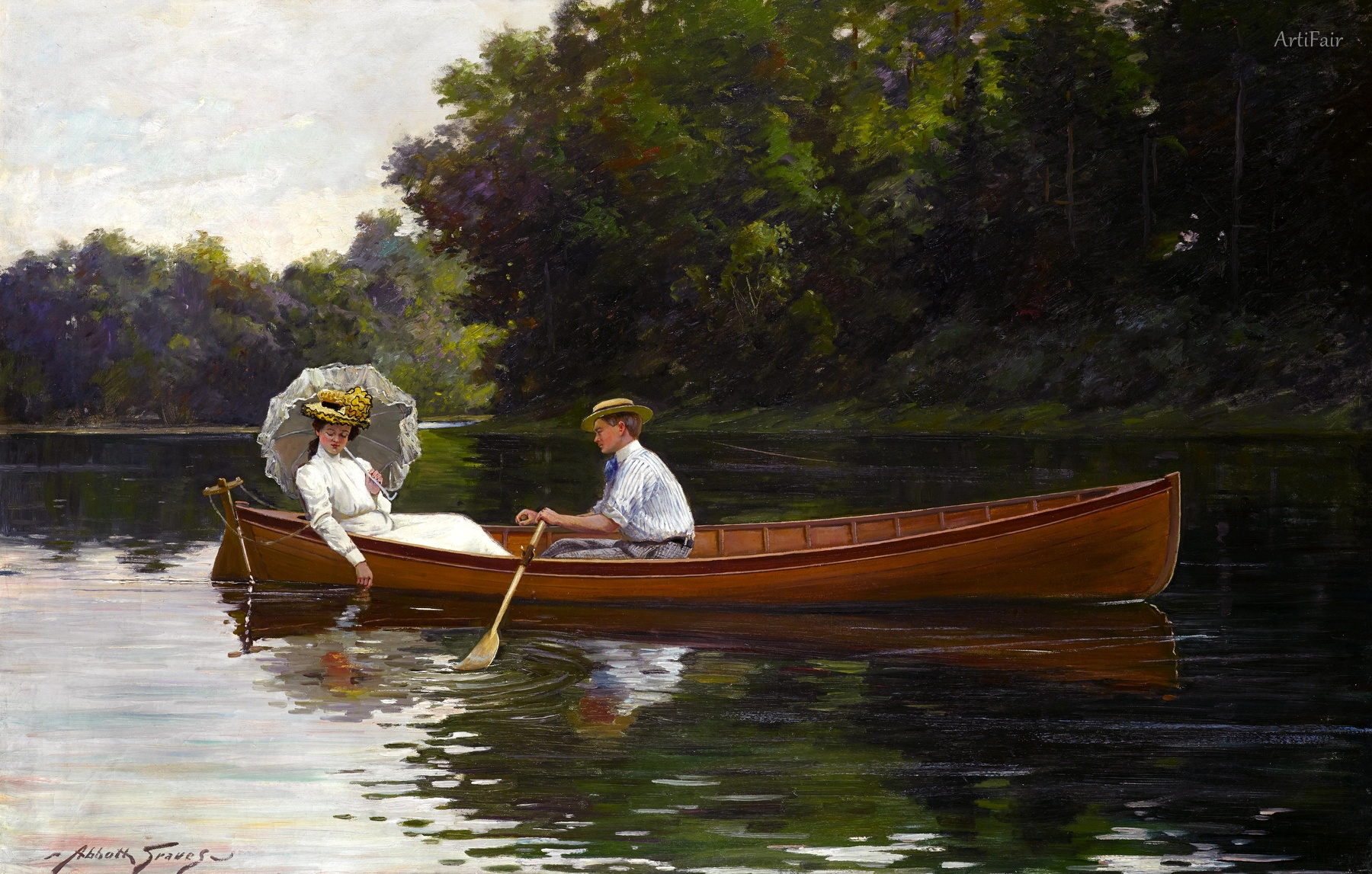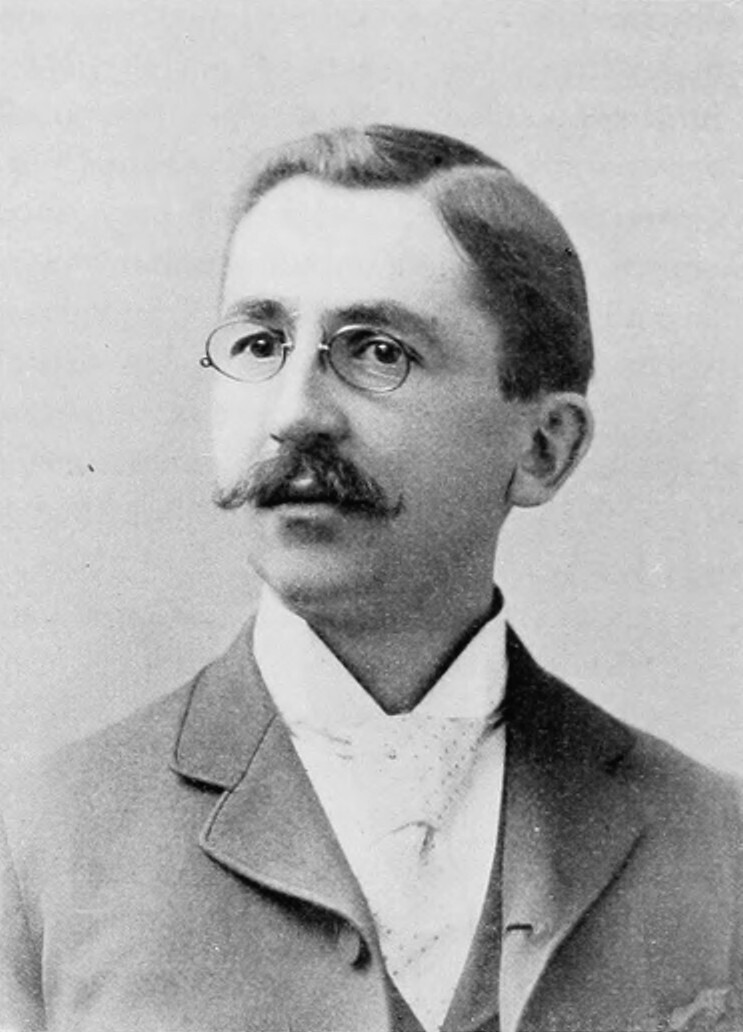

Abbott Fuller Graves
US
40
Artworks
1859 - 1936
Lifespan
Artist Biography
Abbott Fuller Graves (1859–1936) was a distinguished American painter and illustrator, celebrated for his enchanting decorative open-air garden paintings and vibrant floral still-lifes. Born in Weymouth, Massachusetts, Graves carved a niche for himself in the American art scene with his distinctive use of thick impasto brushstrokes, luminous colors, and a masterful capture of natural light, all hallmarks of European Impressionism's influence. His work predominantly featured idyllic garden scenes, often bathed in sunlight, reflecting a deep appreciation for nature's beauty and the transient effects of light.
Born on April 15, 1859, to James Griswold Graves and Eliza Nicholls (Fuller), young Abbott initially aspired to become an architect, briefly attending the Massachusetts Institute of Technology. However, his true calling lay in painting. In 1884, he embarked on a pivotal journey to Paris and Italy, accompanied by his friend and fellow artist Edmund C. Tarbell. This European sojourn was crucial for honing his skills as a flower painter, and he sought critiques from Georges Jeannin, a renowned Parisian flower painter. Upon returning to Boston in 1885, Graves joined the faculty of the Cowles Art School, where he taught alongside Childe Hassam, another significant figure in American Impressionism. Their association undoubtedly led to a mutual exchange of artistic ideas. Driven by a desire to further refine his craft, Graves returned to Paris in 1887 to study figure painting at the prestigious Académie Julien under the tutelage of Fernand Cormon, Jean-Paul Laurens, and Paul Gervais.
Graves returned to Boston in 1891 and soon established his own art school, initially in Boston and later relocated to Kennebunk, Maine. He also made the coastal town of Kennebunkport his home and a significant source of inspiration. While his reputation was primarily built on garden and flower subjects, his time in Kennebunkport broadened his thematic scope to include genre paintings. These works depicted the everyday lives of the local community—farmers, fishermen, firemen, and old sea captains—and many were reproduced on popular calendars and postcards, bringing his art to a wider audience. Between 1902 and 1905, Graves returned to Paris, working as a commercial illustrator for French magazines and furthering his studies at the Académie Vitti. This period also saw him spend summers in Holland and England, and in 1905, he achieved international recognition with a medal at the Paris Salon.
After 1891, Graves predominantly focused on the floral and garden landscapes that became his signature. His canvases were filled with lush, sun-drenched gardens, often featuring elegantly dressed women, and sometimes depicted exotic gardens encountered during his travels to Spain and South America. His technique was characterized by the Impressionistic application of thick paint, vibrant palettes, and an emphasis on the interplay of light and shadow, lending his paintings a luminous and dream-like quality. Even as he explored genre scenes, his love for floral subjects remained paramount, and he continually refined his ability to capture their delicate beauty and the ephemeral qualities of natural light, resulting in works that exuded a new luminosity and chromatic brilliance.
The 1920s marked a period of significant national recognition for Graves. Following a successful show in New York, he began spending his winters in the city after 1922. He became an active member of several prestigious art organizations, including the National Arts Club, the Salmagundi Club, and Allied Artists of America. His standing in the art community was solidified in 1926 when he was elected an Associate of the National Academy of Design (A.N.A.). Despite the rising tide of Modernism, Graves's poetic and idyllic garden scenes continued to appeal to critics and patrons alike throughout the 1920s. However, the Great Depression and shifting artistic tastes eventually impacted his later success and reputation.
Abbott Fuller Graves passed away in Kennebunkport, Maine, on July 15, 1936, leaving behind a rich legacy as a specialist in garden painting. While he may not have achieved the same level of widespread fame as contemporaries like Tarbell and Hassam, Graves was a painter of considerable note, particularly admired for his ability to infuse his canvases with light, color, and a sense of serene beauty. His works are held in numerous public and private collections, including the Mead Art Museum at Amherst College, the Arnot Art Museum, the Brick Store Museum in Kennebunk, and the Princeton University Art Museum, ensuring that his contributions to American Impressionism and his beautiful depictions of gardens and floral life continue to be appreciated. His awards, including medals from the Massachusetts Charitable Mechanics Association and the Paris Salon, further attest to his skill and contemporary acclaim.